Collingwood Villas ~ Stoke, Plymouth.
Client : Private.

Collingwood Villas is situated in a conservation area of Stoke in Plymouth. A section of retaining wall belonging to the property was showing signs that it could possibly collapse onto the public highway. Plymouth City Council had notified the owners that as this was a potential hazard, it had to be made safe.


There were obvious visible signs of cracks within the stonewall and because the wall had been monitored for a few months it was definitely on the move. The cause was a tree directly behind the wall and the roots were pushing it outwards. The tree needed to go. This took several months to sort out because it could only be removed after the bird nesting season and secondly, the tree had a preservation order on it because it was in a conservation area. Permission had to be granted by Plymouth City Council to remove the tree. So it was a kind of catch twenty-two situation. If we repaired the wall and the tree stayed, the tree would still grow and the wall would crack again and ultimately collapse. If the council wanted the wall made safe then the tree had to go. In the end the wall won. By the time we got on site the tree was gone and work soon got underway taking the wall down.

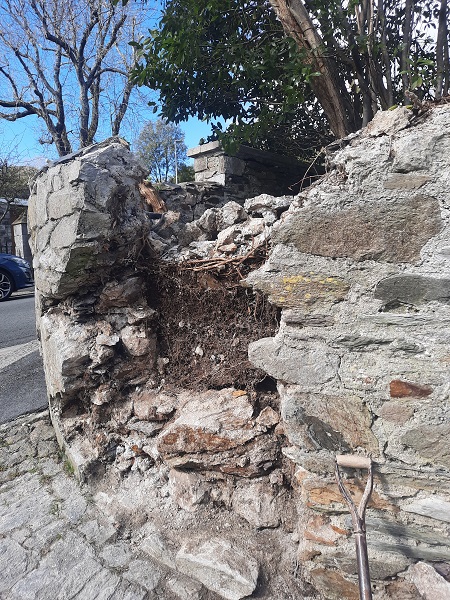
The wall had been built with Plymouth limestone and this was set aside for re-use, and it looked like the wall had been repaired in the past. To stabilize the repair as much as possible we cut out some of the bed joints in the stonework either side of the repair to a depth of about 50mm. These extended past the extent of the repair by 500mm minimum.

10mm thick stainless steel helical straps were set into these bed joints with epoxy mortar. The straps would span the repair and be fixed into the bed joints on both sides. The straps would be built into the new stonework as it went up. These straps are placed roughly 300mm apart and once complete it is classed as a structural repair.
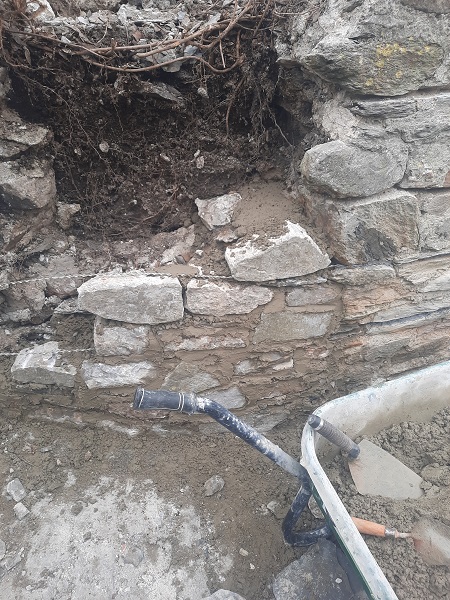
The stonework was soon built up to its original height with the straps built in.

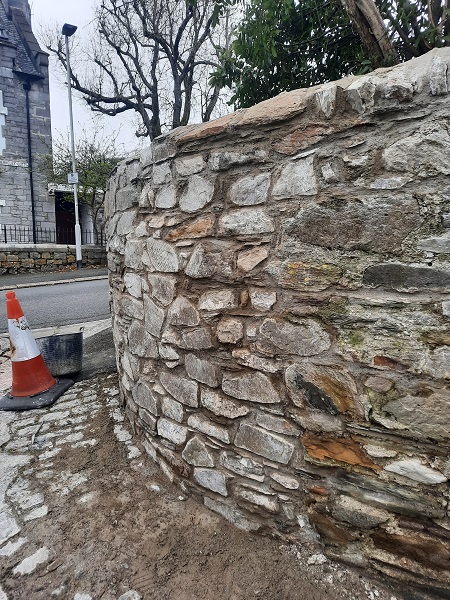
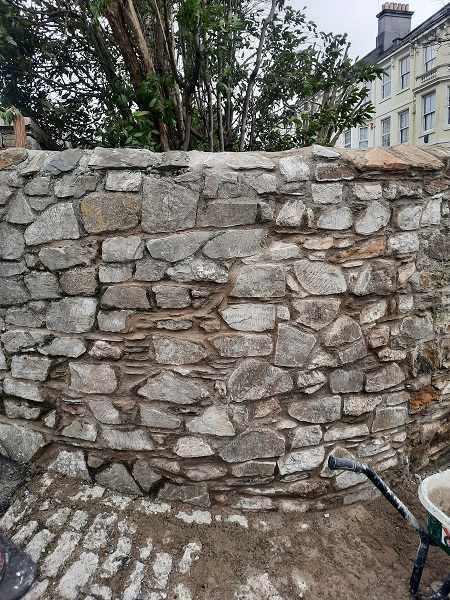
A traditional lime mortar was used to build the wall.
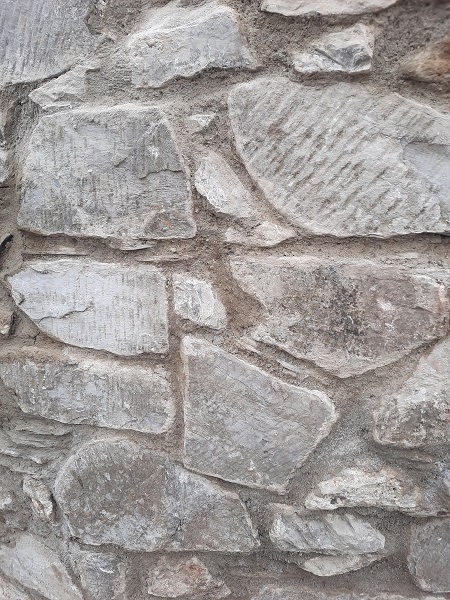
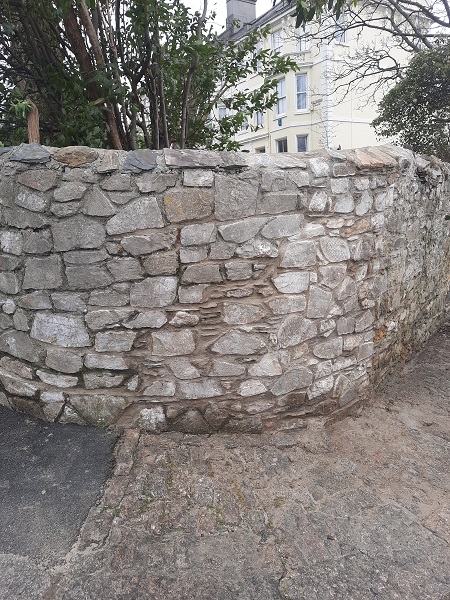
What was once an unsafe wall, was now a safe wall.


